10 Engaging Literacy Activities for Early Readers
The Importance of Early Literacy
Developing strong literacy skills at a young age is crucial for a child's overall academic success. Early literacy activities help children build a solid foundation for reading and writing, improving their language skills, comprehension, and creativity. Engaging children in fun and interactive literacy activities not only enhances their learning but also fosters a love for reading and a lifelong passion for learning. Here are 10 engaging reading activities for early readers:
Activity 1: Letter Recognition Games
Letter recognition is the first step towards reading. Play games like "I Spy" or "Alphabet Scavenger Hunt" where children identify letters in their surroundings. Use flashcards, magnetic letters, or letter puzzles to make the learning process enjoyable.

I Spy with my little eye…
This classic game is a winner for teaching letter recognition. Whether you’re in the classroom or the great outdoors, encourage your pupils to keep an eagle eye out for letters. Point out objects or features and ask your class to identify the letters. For added interest, give them a mini detective badge or a magnifying glass.
Alphabet Scavenger Hunt – On the hunt for knowledge!
Who doesn’t love a scavenger hunt? Create a list of letters from A-Z and send your pupils on a quest to find objects that start with each letter! This game not only sharpens their letter recognition skills, but also encourages exploration and curiosity. Plus, there’s nothing quite like the triumphant feeling of crossing off all the letters on the list!
Activity 2: Sight Word Bingo
Sight words are commonly used words that children need to recognise instantly.
Create a bingo game using sight words and have children mark the words on their bingo cards.
This activity helps children improve their word recognition skills while having fun.
Activity 3: Phonics Treasure Hunt
Create a treasure hunt where children follow clues and find objects that begin with specific phonics sounds. This activity not only reinforces phonics skills but also encourages problem-solving and critical thinking.
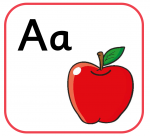
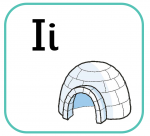
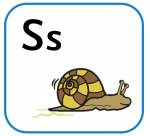
Our top tips for this activity:
-
Make the clues challenging but not too difficult – you want the children to be challenged, but you also want them to be able to solve the clues on their own.
-
Use a variety of different objects for the children to find, this will keep them engaged and interested.
-
Make the treasure hunt a cooperative activity. Encourage the pupils to work together to solve the clues and find the ‘treasure’.
-
Offer a small prize – this will give them an extra incentive to participate and complete the activity.
Activity 4: Storytelling with Props
Storytelling with props is a fun and engaging activity for children of all ages! It allows them to use their imagination and creativity to bring stories to life. It also helps them to develop their language and communication skills. 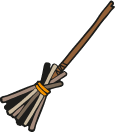
To start, gather a variety of props and costumes to bring stories to life. This could include anything from stuffed animals and dolls to hats and scarves.
You can also use household options such as pots, pans, brooms, and chairs.
Encourage children to act out their favourite stories, using the props and costumes to enhance their imagination and storytelling skills.
Activity 5: Interactive Reading Apps
Interactive reading apps are a great way to introduce children to the world of reading in a fun and engaging way. These apps offer a variety of features, such as read-aloud features, interactive games, and quizzes, to help children learn how to read and develop their reading comprehension skills.
Some more benefits of using interactive reading apps for children:
-
Interactive apps are engaging and motivating. The bright colours, animations, and interactive features of these apps can help to keep children’s attention and motivate them to read.
-
Interactive apps are personalised. Many interactive apps allow children to choose their own reading level and difficulty, which can help to ensure that they are challenged but not frustrated.
-
They provide immediate feedback on the children's reading progress, which can help them to identify and correct their mistakes.
Activity 6: Writing and Drawing Prompts
Writing and drawing prompts are a great way to stimulate children’s creativity and language development. They encourage children to think outside the box and come up with their own unique ideas.
Writing and drawing prompts can also help children to develop their storytelling skills and learn new vocabulary. Ask children to write or draw about their favourite book characters, create alternate endings to stories, or imagine new adventures.
Here are some tips for using writing and drawing prompts with children:
-
Choose prompts that are appropriate for your pupils age and developmental level.
-
Give your pupils time to brainstorm and come up with ideas. Don’t pressure them to start writing or drawing right away.
-
Encourage the children to be creative and imaginative. There are no right or wrong answers when it comes to writing and drawing prompts!
-
Provide positive feedback and support!
Activity 7: Vocabulary Building with Word Puzzles
 Vocabulary building with word puzzles is a fun and effective way to help children expand their word knowledge. Word puzzles, such as crosswords and word-searches, can help children to learn new words, practice their spelling skills, and develop their problem-solving skills. This activity helps children expand their word knowledge while having fun solving puzzles.
Vocabulary building with word puzzles is a fun and effective way to help children expand their word knowledge. Word puzzles, such as crosswords and word-searches, can help children to learn new words, practice their spelling skills, and develop their problem-solving skills. This activity helps children expand their word knowledge while having fun solving puzzles.
Here are some additional tips for making vocabulary building with word puzzles even more fun and engaging:
-
Turn it into a competition – see who can solve the puzzle the fastest or find the most words.
-
Make it a team activity – have children work together to solve the puzzle.
-
Create your own word puzzles – create your own themed word puzzles, such as seasonal word searches.
Activity 8: Acting Out a Book
Select a book and have children act out scenes from the story.
Provide the class with props and costumes and encourage them to use expressive voices and gestures to bring the characters to life. 
Acting out a book improves comprehension and promotes creativity.
Activity 9: Rhyme Time Sing-alongs
Sing nursery rhymes and songs with repetitive patterns is a fun and engaging way to develop phonemic awareness and language skills in young children. Nursery rhymes and songs help children to hear the similarities and differences between sounds, recognise rhyme and alliteration, and increase their vocabulary and comprehension.
Encourage your pupils to join-in and dance along to the rhythmic tunes, as this will also boost their physical development, coordination, and self-expression.
Activity 10: Creating a Book Club
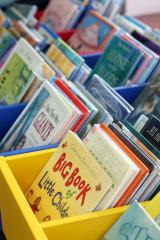 Form a book club with other children or family members. Choose a book to read together and discuss the story, characters, and themes.
Form a book club with other children or family members. Choose a book to read together and discuss the story, characters, and themes.
This activity promotes social interaction, critical thinking, and a love for reading.
By incorporating these engaging literacy activities into a child's daily routine, parents and educators can foster a lifelong love for reading, writing, and learning. Let the adventures in literacy begin!
Looking for More Inspiration?
The guide introduces Mighty Writer and how to use it in your classroom.
It also contains links to the latest training videos, pricing details, a sample lesson plan, and a helpful, independent review by John Dabell of "Teach Reading & Writing" magazine.

